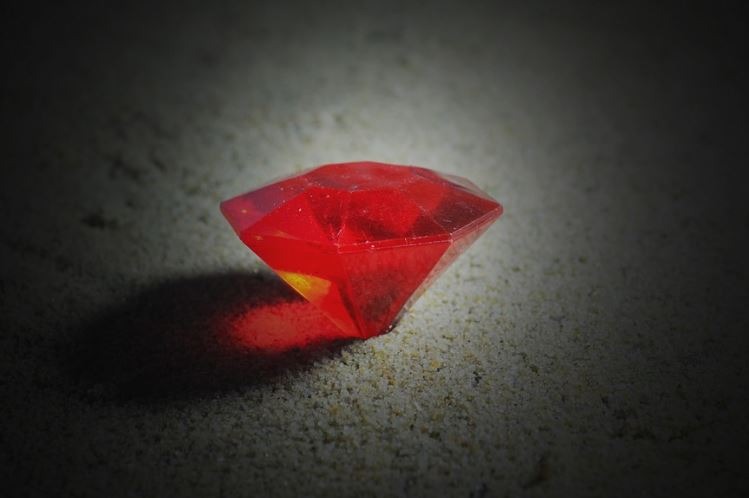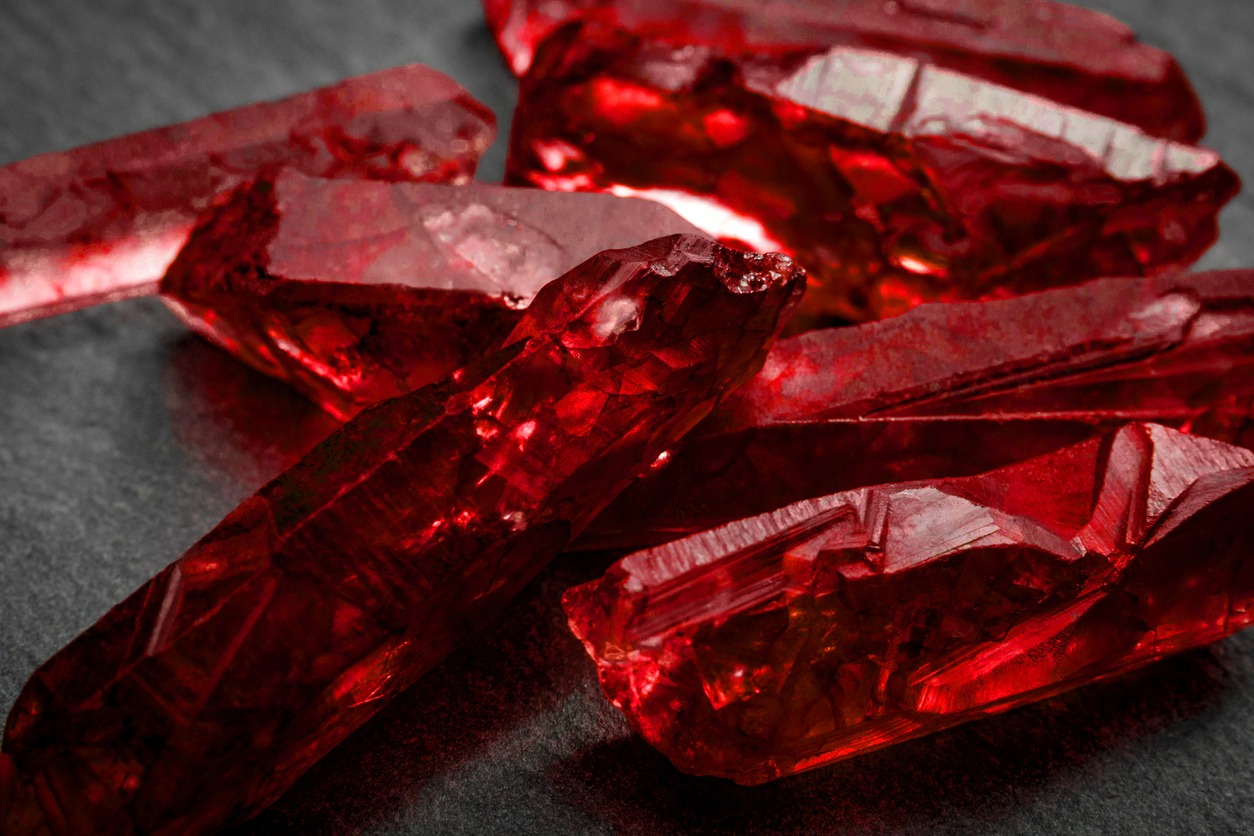Rubies are one of the most valuable precious stones, they have been coveted for centuries by royalty, gem collectors, and larger-than-life personalities and have experienced a resurgence in popularity in recent years as a centerpiece stone for an engagement ring.
In this article, we will discuss things you need to know about rubies as well as their uses in jewelry.
What are Rubies?
Ruby gemstones are a variety of the mineral corundum. More specifically, they are the red variety, which is colored by chromium. Other colors of corundum are classified as sapphire. The word “ruby” comes from the Latin word “ruber” which means red hue.
Igneous, metamorphic, and sedimentary rocks all contain the rock-forming mineral “corundum.” The mineral is well known for both its extreme hardness and the fact that it occasionally appears as lovely transparent crystals in a variety of colors. On the other hand, chromium is a bright, hard, and silvery-white metal plating used on steel and other materials. It is a hard, lustrous, steely-gray metal with a high polish tolerance and a high melting point. It is frequently referred to as “chrome” and is one of the most significant and necessary industrial metals because of its resistance to corrosion and hardness.
The color of the finest rubies ranges from bright, pure red to slightly purplish red. In the majority of markets, rubies with only red overtones sell for less money than those with orange and purple undertones. For a color to be considered of the highest quality, it must not be either too dark or too light.
Durability
When it comes to strength, rubies rank a 9 on the Mohs scale. They are only marginally softer than diamonds and as hard as sapphires.
A Brief History of Ruby
Rubies were first found in the Mogok region of Myanmar, formerly known as Burma, as early as 2500 B.C. Stone Age tools have been found at the Mogok mining site, providing evidence of the area’s long history. The largest rubies were to be taken directly to the ruler of Burma and become his property, just as stones were mined in antiquity. Since at least 600 AD, Burma has been a significant source of rubies. Burmese rubies continue to be among the most expensive ruby gems to this day.
According to legend, the Chinese Emperor Kublai Khan, who ruled the Mongol Empire from 1260 to 1294, is said to have offered an entire city in exchange for a sizable ruby of exceptional quality. And during his travels, the renowned explorer Marco Polo, who frequently interacted with Kublai Khan, saw ruby mining in Ceylon. He frequently wrote about the appearance of the mines and the techniques used in mining.
In the Renaissance, rubies were very common at court and frequently featured in some of the most well-known pieces of jewelry from the time. In his most well-known portrait from the time, King Henry VIII is renowned for wearing a sizable necklace set with rubies and pearls. Despite having a long history, it wasn’t until 1800 that ruby was identified as a type of corundum. Before that, garnet, tourmaline, and red spinel were also thought to be rubies. Even the Black Ruby, one of England’s famous crown jewels, was once thought to be one of the largest cut rubies before it was discovered to be spinel.
As the focal point in crowns, tiaras, and parures of exceptional beauty and craftsmanship, rubies were the jewels that all royals coveted. One of them is the British Royal Family, which frequently uses colored stones to commemorate weddings and engagements. A flower-shaped ruby and diamond ring was given to Princess Margaret as an engagement gift in 1960. After 25 years, Sarah Ferguson received a similar gift when she got engaged to Prince Andrew.
In the 1990s, the Mong Hsu region of Myanmar began producing rubies after the traditional Burmese mines were exhausted. These were heated to increase saturation and transparency, even though they lacked the deep red color of classic Burmese rubies.
While imitation ruby has been around since the Roman era, it wasn’t synthesized until the early 1900s.
What are Rubies known for?
The heart’s stone is ruby. It makes it easier to show and receive unrestricted love. In the gem language, it encourages a love of life and instills new vigor. Additionally, it encourages sexual activity, but never in a harmful way. In addition to activating the heart chakra, it also centers the emotions, calms anger, eases disappointment, and banishes negative energy. It promotes harmony and realistic goal setting, and it gives people the energy to inspire change.
Rubies are particularly effective for soul healing, spiritual development, and past-life regression. They act as a psychic shield that guards against being emotionally depleted by others or by life. Ruby gemstones are said to help people think bravely and optimistically, concentrate better, and have better cognitive and leadership abilities.
Where are they produced?
Noteworthy locations where quality rubies have been produced include Myanmar, Thailand, Cambodia, Vietnam, India, Pakistan, Afghanistan, Sri Lanka, China, Australia, the United States, Madagascar, Kenya, Tanzania, Nigeria, and Malawi.
Ruby and Jewelry
Rubies are most frequently used in beautiful jewelry. However, due to their extraordinary strength and red fluorescence, rubies, both natural and artificial, are used in many different applications, including watchmaking, medical equipment, and lasers.
The origin of a ruby definitely influences its value. For instance, rubies from Myanmar typically sell at the highest prices. They have the highly sought-after, nearly ideal color known as “pigeon’s blood red,” which is a very slightly purplish red with vivid saturation and a dark tone. Extreme red fluorescence is another characteristic of them.
Today’s ruby lovers have more jewelry design options than ever before thanks to technological advancements in the jewelry industry and the global exchange of ideas. Modern manufacturing has made jewels much more affordable than they were in the past, and the beauty and allure of antique and vintage styles have frequently sparked a wave of revivals.
The price of a ruby can vary depending on its quality and carat weight, just like any other gemstone. Keep in mind that most gemstones are weighed in terms of carat weight (1 carat = 0.2 grams). Depending on the 4Cs (color, clarity, carat weight, and cut), rubies can cost as little as $1 per carat or as much as $100,000 per carat.
Synthetic Rubies vs. Real Rubies
Instead of coming from nature, synthetic rubies are made in laboratories. A synthetic ruby is the same as a natural ruby in terms of chemistry, optics, and structural composition. Synthetic rubies can be produced in a matter of months, whereas natural rubies take millions of years to form.
It is a common misconception that synthetic rubies are fakes, but this is untrue. The colors and beauty of rubies grown in nature are identical to those of lab-grown rubies, which are also made of corundum. But unlike natural rubies, which frequently have stains and other flaws, these stones are almost always flawless because they are made in a carefully controlled environment.
However, due to their rapid production and use of fewer resources, synthetic rubies are frequently much less expensive than natural ones. It is the ideal, cost-effective choice for those who want to shop on a tight budget without sacrificing quality.
Fun facts about Rubies
- Other than diamonds, the Sunrise Ruby is the most expensive gemstone in the world.
- The gemstone associated with July is ruby. As red is the traditional color for this anniversary, red rubies are thought of as the 15th anniversary stone, symbolizing the passionate love that represents this milestone.
- The 125West Ruby currently holds the record for largest ruby. The rough-cut, unpolished gemstone is 8.2 pounds/18,696 carats in weight.2 pounds/18,696 carats in weight.
- The Sanskrit name for ruby is “Ratnaraj,” and translates to “king of the gems.”
- Auguste Verneuil displayed the first lab-grown rubies at the Paris World Fair in 1900.
- Most rubies will glow in the sun because UV rays interact with the chromium in them.


